Ultimate Cooking Guide by Roger Keyserling (no david read aloud TXT) 📖

- Author: Roger Keyserling
Book online «Ultimate Cooking Guide by Roger Keyserling (no david read aloud TXT) 📖». Author Roger Keyserling
Now that you know where most wine is from, and how it gets bottled, maybe it’s time to learn How to Make Wine.
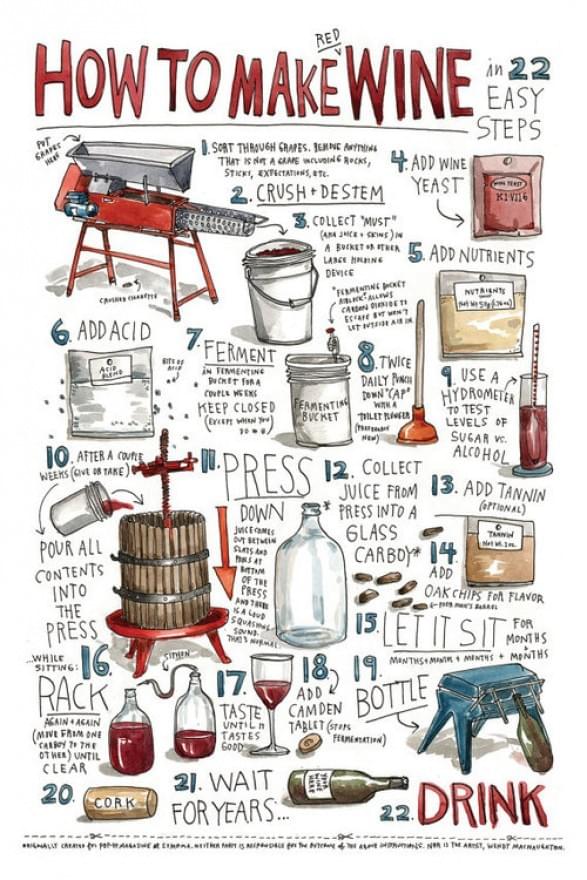
by pslifestyle.
Explore more infographics like this one on the web’s largest information design community – Visually.
How To Describe The Taste of Wine
If you are running a wine discussion, identifying the different types of wine may be just the tip of the iceberg. You have to give the wine more description, mostly how the wine tastes. Though the taste of wine sparkles a lot of debate, some certain assets are generally agreed-upon. To get the taste of the wine, you have to understand how to describe the taste you are getting full. The following are used to describe the taste of the wine
1. Sweetness. Wine can either be sweet or dry. Some are semi-dry with a little sweetness.
2. Acidity. Since you already know this is in white wine, the acidity level will determine the taste. Lower acidity makes the wine fat," and if too much, the wine tastes sour. The right level of acidity makes the wine crisp.
3. Tannin. This is for the red wines. Lower tannins in a glass of wine make it smooth and soft and more drinkable. The more the tannins, the bitter the wine is.
4. Body. The body is determined by the viscosity and the weight of the wine. Some wine is like water and feels thin while others are full-bodied and feels thick.
Something else to consider when tasting wine is the flavors. Some flavors may be present in the wine includes fruity, earthy, among others.
History
The oldest winery that we know of is Armenian, dated to 4100 BCE. The Phoenicians spread wine around the Mediterranean in the tenth century BCE, introducing the drink to the ancient Greeks, who in turn inspired the Romans to become wine fanatics and grow grapes across their empire. The Greeks and Romans took their wine seriously, dedicating gods to their favorite fermented fruit juice. Dionysus was known as the god of the grape harvest to the Greeks, while Bacchus was the deity of choice for Roman oenophiles. People have been drinking too much wine for centuries. Everything from the Odyssey to the Bible mentions the perils of overconsumption. Thomas Jefferson may be responsible for the California wine boom. After being sent to France, Jefferson brought vine cuttings back to the United States. 2017 saw a drop in global wine production to a level not seen in sixty years thanks to poor weather conditions. 2020 Due to Corvin 19 wine sales hit very high sales numbers while people were social distancing.
Bottle Sizes
187.5 ml Piccolo or Split: Typically used for a single serving of Champagne.
375 ml Demi or Half: Holds one-half of the standard 750 ml size.
750 ml Standard: Common bottle size for most distributed wine.
1.5 L Magnum: Equivalent to two standard 750 ml bottles.
3.0 L Double Magnum: Equivalent to two Magnums or four standard 750 ml bottles.
4.5 L Jeroboam: Equivalent to six standard 750 ml bottles. (In sparkling wines a Jeroboam is 3 liters)
4.5 L Rehoboam: A sparkling wine bottle with six standard 750 ml bottles.
6.0 L Imperial: (aka Methuselah) Equivalent to eight standard 750 ml bottles or two Double Magnums.
9.0 L Salmanazar: Equivalent to twelve standard 750 ml bottles or a full case of wine!
12.0 L Balthazar: Equivalent to sixteen standard 750 ml bottles or two Imperials.
15.0 L Nebuchadnezzar: Equivalent to twenty standard 750 ml bottles.
18.0 L Solomon: (aka Melchoir) Equivalent to twenty-four standard 750 ml bottles.
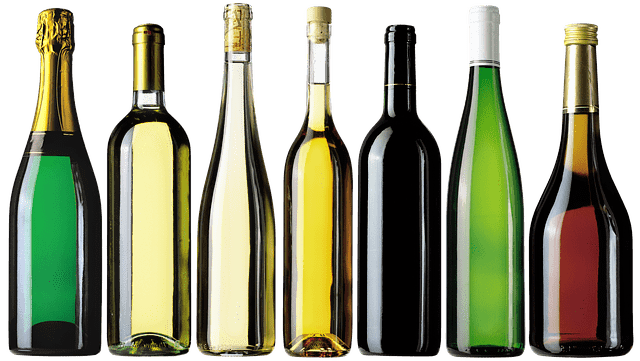
Temperature
All wine is stored at the same temperature, regardless of its color. But reds and whites are consumed at quite different temperatures. Too often people drink white wines too cold and red wines too warm, limiting how much you can enjoy the wine. A white that’s too cold will be flavorless and a red that’s too warm is often flabby and alcoholic.
Ideally, whites should be between refrigerator temperature (40°F) and storage temperature (55°F) and reds should be somewhere between storage temperature and room temperature, which is often as high as 70°F. If your wine is in a temperature-controlled unit, at 53-57°F, pop your bottles of white wine into the refrigerator half an hour prior to service and take your reds out of storage half an hour prior to service. This allows time for your whites to chill and your reds to warm up. If you have yet to invest in a wine storage refrigerator and your wines are kept at room temperature or in the refrigerator, you’ll do the opposite. Put your reds in the refrigerator for half an hour and take your whites out of the refrigerator for half an hour. Dessert wines, sparkling wines, and rosés are best enjoyed at a cooler temperature than whites. The refrigerator temperature will do the trick.
Wine handling and serving
People often forget the basics of handling the wine when opening it. To successfully open a wine, you need to carefully insert the screw in the cork and twist about six half turns. Lever the cork out slowly and wipe any sediments
It is vital to serving the wine in the correct glassware. A wine glass needs some space to gasp the tastes and the aromas properly
• Small bowled glasses are best for serving white wine. They help maintain a cold temperature while preserving the aromas.
• Large glasses are suitable for serving bolder red wines. The expansive space helps the wine taste smoother while allowing ethanol to evaporate.
• Standard glasses can serve regular red wine. The small vase allows you to taste the flavors when drinking the wine.
A Few Tips:
Invest in decent stemware. Look for glasses with medium-sized bowls, which are versatile enough for all wines, and thin rims, which always make the wine taste better. Hand washing will keep them looking their best, but if the stems are dishwasher safe, use only the top rack.
Be sure to pour the proper amount of wine into your glass to get the best possible wine experience.
When drinking red wine, bring the bottle to the glass and gently pour your red wine until your glass is half full. ... When serving a white wine, wrap a napkin around the neck of the bottle for insulation before pouring.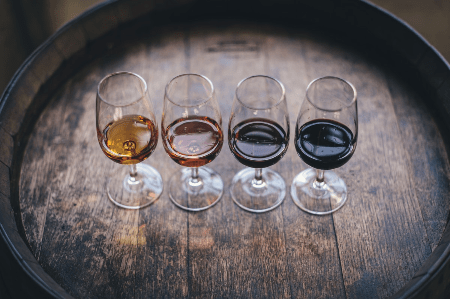
Add yourself to the store’s email list to stay informed about in-store events and sales. Attend free tastings to “try before you buy.” Ask for bargain wine suggestions—clerks are happy to share great finds.
Any time a wine is topped with a cork, it should be stored on its side. Cork is used as a topper because it expands in the neck of the bottle to protect wine from oxygen. But if the cork starts to dry out, it will start to let air inside, causing premature oxidation.
No Drip Method
Rotate the bottom side of the bottle away from you as you deliberately stop pouring. This trick does require some practice for perfection but it should throw any last tiny drips off route to the back of the bottle. You can also use a napkin or paper towel to catch drips.
What makes a wine have strong or weak tannins depends on how long the juice sits with the grape skins, seeds, and stems after the grapes have been pressed. The longer the skins, seeds, and stems soak in the juice, the more tannin characteristics they will impart. This explains why red wines have stronger tannins than white wines. When producing red wine, the winemaker wants the skins to impart more color, thereby adding more tannins to the juice. Further, by extracting the characteristics of tannins, they are able to add deeper complexity to the wine.
Keep experimenting. Tasting is the key to learning about wine. So continue to try new ones, in addition to sticking with tried and true favorites.
The ability to sniff out and untangle the subtle threads that weave into complex wine aromas is essential for tasting. Try holding your nose while you swallow a mouthful of wine; you will find that most of the flavor is muted. Your nose is the key to your palate. Once you learn how to give the wine a good sniff, you’ll begin to develop the ability to isolate flavors—to notice the way they unfold and interact—and, to some degree, assign a language to describe them.
To drink wine, start by pouring it into a wine glass so that it's about half full. Then, swirl the wine around in the glass to intensify the aroma. Next, take a small sip of the wine and swish it around in your mouth to absorb the flavors. After 5 seconds, swallow it and take note of the taste it leaves in your mouth.
A Question of Taste shows the proper way to taste wine and a little bit about the anatomy of grapes
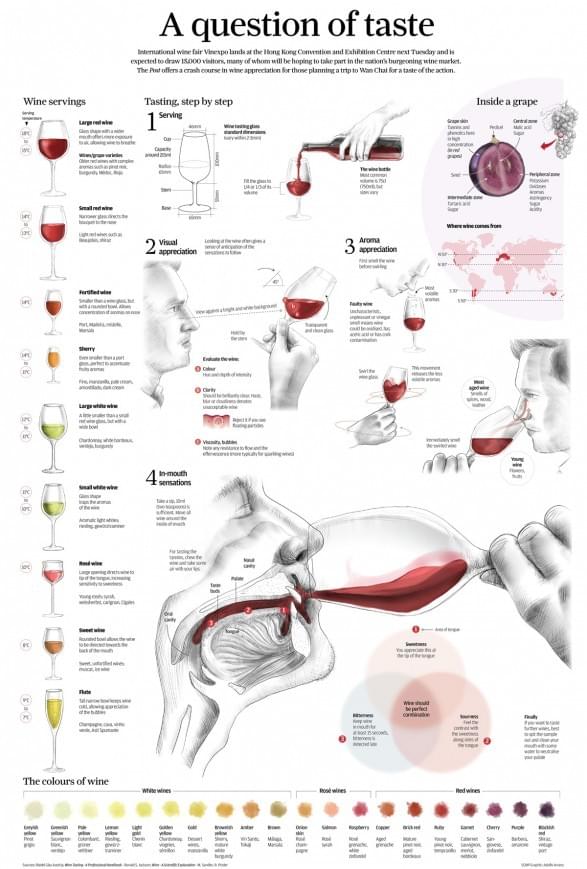
by adolfux.
Explore more infographics like this one on the web’s largest information design community – Visually.
Food and wine pairing
To properly pair the wine and the dishes, you need to balance the components of the wine and the foods. You can choose to contrast the taste of the wine and the nutrition or you can consider the intensity of the food and the wine you want to serve.
Some tips to successfully pair your wine with the food include
• The acid in the food should be less than in the food
• The wine should be more sweet compared to the food
• Red meat is best paired with red wine while white wine is good with fish and chicken
• Rose and sparkling wines are mostly not the best wine to pair your dishes with
• It is more important to use the sauce to make the pairing other than utilizing the meat
The above are the necessary steps that you need to learn when it comes to wine. This vast knowledge is beneficial, especially if you are looking to make something extraordinary from the ordinary routine. The above tips are enough to make sure you weigh in in the next wine debate.
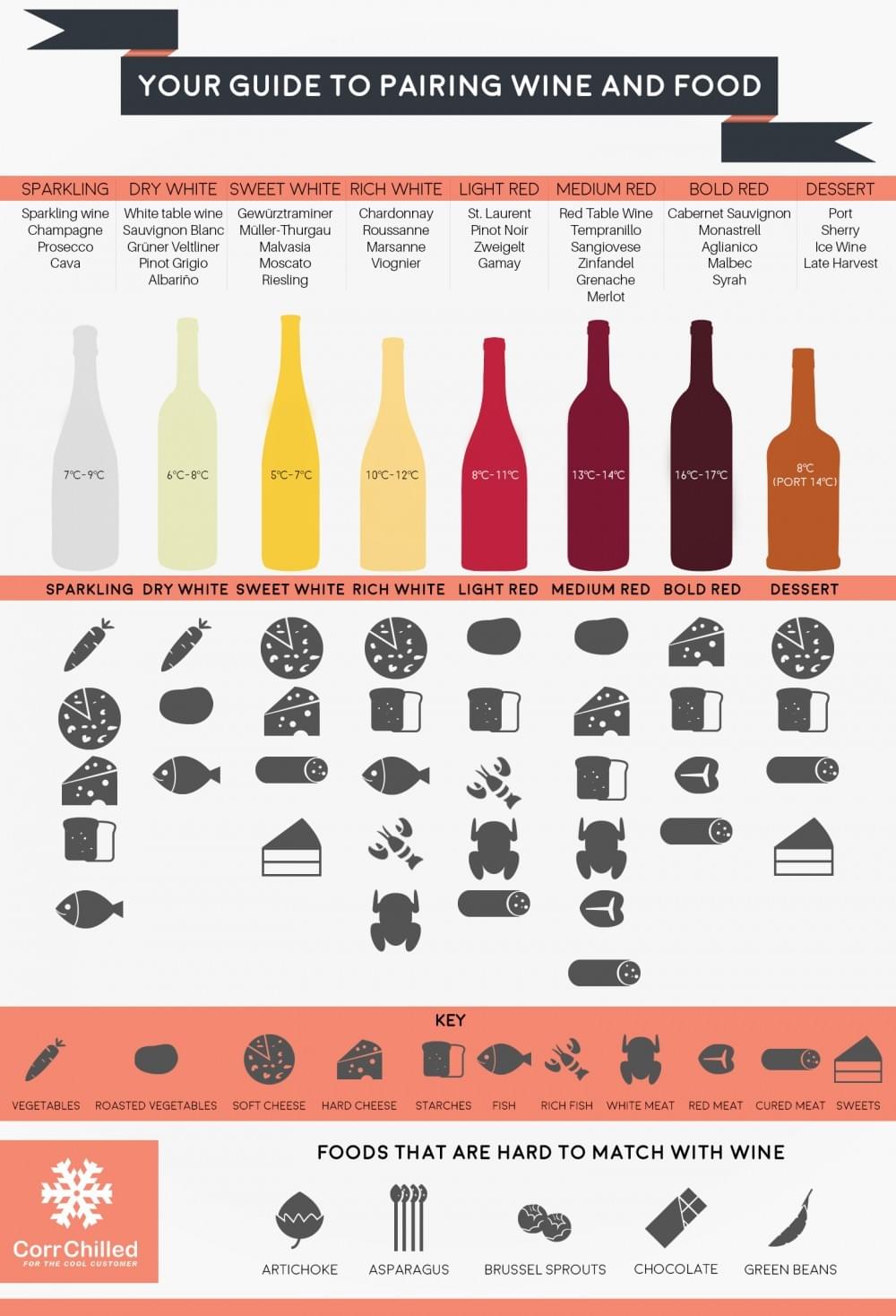
The pairings suggested in the infographic are mere guidelines, there is no set in stone rules for wine pairings, everyone’s taste buds are different, and matching food and wine is a matter of personal taste.
The truth is, there are myriad factors to consider when evaluating and buying wine. Apart from the obvious fact that each person will have his or her own preferences and opinions on what makes a good wine, each bottle will vary depending on the geography and climate that the grapes were grown in, the type and generation of grapes used, and how the grapes were treated from the time they were harvested until they entered the bottle.
Top 10 Brands Of Wine
1) Barefoot 2) Concha Toro 3) Gallo 4) Changyu 5) Yellow Tail 6) Sutter Home 7) Robert Mondavi 8) Hardys 9) Beringer




Comments (0)